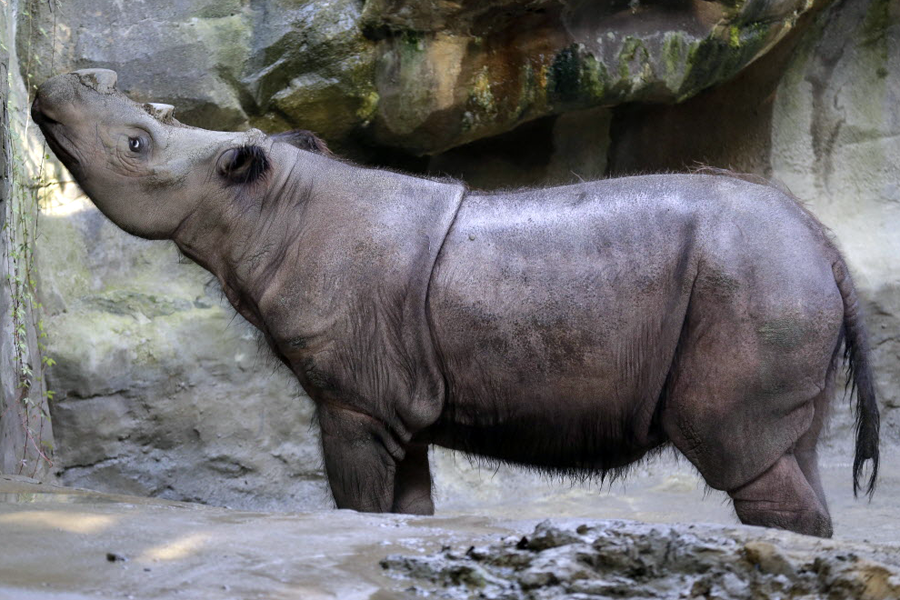Sumatran rhino dies at Ohio zoo, only nine remain alive in captivity
Loading...
| CINCINNATI
The death of the Cincinnati Zoo's lone female Sumatran rhino has dealt a blow to a breeding program aimed at saving one of the world's most critically endangered species.
The rhino, named Suci, was one of only 10 in captivity worldwide and died Sunday after showing symptoms of a disease that killed her mother, although zoo officials say it will be months before the final results of a necropsy are available.
The zoo's breeding effort to mate Suci with a sibling followed a crisis summit in Singapore where conservationists concluded that as few as 100 of the two-horned, hairy rhinos might remain in forests in their native Indonesia and Malaysia. The species has become endangered through loss of forests and poaching of the animals' horns, which are believed by some Asian cultures to have medicinal properties.
"Suci was a symbol of hope for her entire species, one that is quickly losing ground in the wild, and her absence will leave a hole in our hearts," Terri Roth, director of the zoo's Lindner Center for Conservation & Research of Endangered Wildlife, said in a statement Monday.
Suci was born in 2004 and was one of three Sumatran rhino calves born at the zoo to mother Emi and father Ipuh. Emi died in 2009 and Ipuh in 2013.
Keepers had hoped to mate Suci with her younger brother, Harapan, who is now the only Sumatran rhino in North America. Andalas, the other male born at the zoo, was sent to Sumatra in 2007 to bolster a breeding program there and has fathered a male calf with a wild-born rhino.
Cincinnati Zoo staff had to wait for Harapan to reach breeding age, but Suci began losing weight several months ago and staff began treating her for hemochromatosis, also known as iron storage disease.
Zoo scientists, keepers and veterinarians had been treating Suci with a therapy used on humans and African black rhinos and her behavior and appetite had improved. But her condition rapidly deteriorated Sunday, Roth said.
Zoo officials could not comment yet on specifics of their breeding plans for the future, although they say they remain committed to working to save the species.
"We are just trying to get through this right now," zoo spokeswoman Tiffany Barnes said.
The zoo has been a pioneer in captive breeding of the species, and Roth said last year that there was a lot of urgency in getting Suci pregnant.
"If we don't act quickly and boldly, the loss of this magnificent animal will be among the great tragedies of our time," Roth said in Monday's statement.





